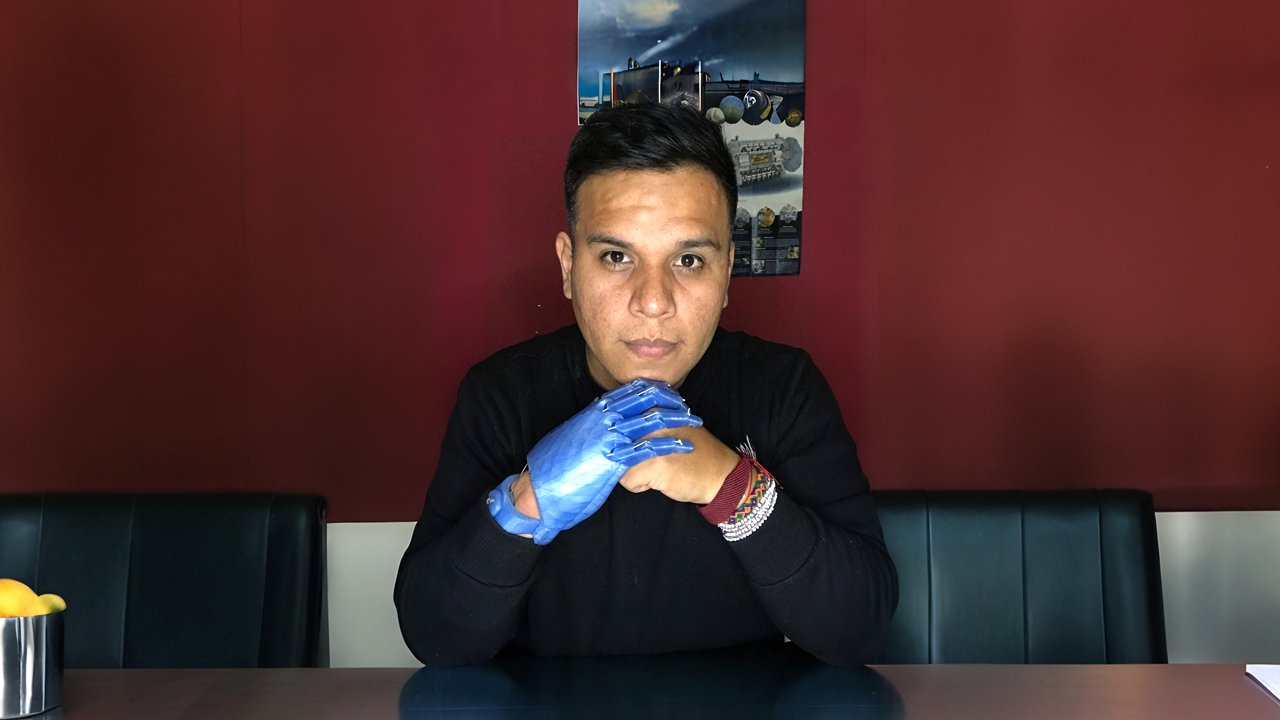More than
12,600 people in Peru have undergone upper-limb amputation. Each month, the
Peruvian Ministry of Labor reports 40 cases of work-related hand injuries.
However, not everyone has access to prosthetics. A basic hook-type prosthesis
(mechanical) costs around 4,000 soles (approximately €900), while myoelectric
prosthetics can reach 25,000 soles (about €5,900).
These
figures, published by the Peruvian government, highlight that the average
monthly salary of 1,500 soles (around €357) makes access to prosthetics
difficult for a large portion of the population. To help improve this
situation, Enzo Romero (Peru, 32 years old) founded LAT Bionics, a
biotechnology company that develops prosthetics using digital manufacturing
processes, significantly reducing both production time and cost.
Romero
knows firsthand what it means to live without a hand—he was born without his
right hand. But it was in the world of cinema where he found the inspiration to
improve his own life and that of others.
“I clearly
remember being seven or eight years old, watching Star Wars: Episode V, where
in the final scene, Luke Skywalker’s right hand is cut off, the same hand I
didn’t have. However, in the next scene, the medical droids give him a
prosthetic hand that not only looked real but could also feel. From that moment
on, I had an idea in my mind: ‘I want a prosthetic like Luke Skywalker’s.’”
This young
innovator earned his degree in Mechatronics Engineering from the Pontifical
Catholic University of Peru. There, in the Biomechanics and Applied Robotics
Laboratory, he built the first research prosthetic designed and developed
entirely in Peru. In fact, the first prosthesis he ever used was one he
designed and built himself, working with a multidisciplinary team.
LAT Bionics
also addresses another major issue for people who need prosthetics in the
region.
“In Latin
America, the main challenge is the availability and accessibility of assistive
technologies for individuals with upper-limb amputations. The local industry is
minimal, and as a result, all available solutions are imported and not
customized,” he explains. The
prosthetics manufactured by Enzo and his partners are proudly made in Peru.
So far, the
company offers two models: Maki, a mechanically activated prosthesis, and
Pisco, an electronically activated one. The latter has three internal motors,
enabling the bionic hand to perform up to four gestures: pinch, cylindrical
grip, claw, and typing posture. It is controlled via the user’s
electromyographic signals, which also help train two artificial intelligence
systems that interpret user intent regardless of the level of amputation.
The
electronic model includes a battery that allows for 6 to 8 hours of daily use.
Each prosthesis is custom-sized and weighted, and users can also choose its
color. “At LAT
Bionics, we provide personalized solutions for our users. No matter how complex
the amputation is, we have a prosthetic for them,” says the founder.
Their
future plans are ambitious. “We want to expand operations with offices across
Latin America.” This would allow 3D scanning and measurements to be performed
locally, with the data sent to the Lima headquarters to design the prosthesis
and return the files for nearby fabrication, closer to the user. Romero is also
open to producing other types of prosthetics, and even creating assistive
devices for pets.
Enzo Romero
has delivered multiple TED Talks and won dozens of competitions and awards. But
perhaps most importantly, he has achieved his childhood dream: to have a
prosthetic hand like Skywalker’s. He was also selected as one of MIT Technology
Review in Spanish 35 Innovators Under 35.




